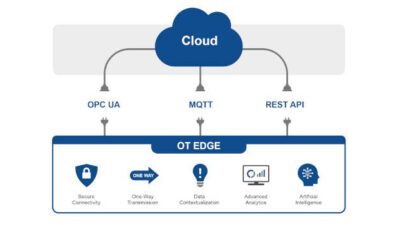Engineers at MIT's Computer Science and Artificial Intelligence Laboratory (CSAIL) have developed a smarter and safer manufacturing tool using telepresence robotics and virtual reality.
Telepresence robotics and virtual reality are two exciting technologies, and by combining the two in a relatively inexpensive way, engineers at MIT’s Computer Science and Artificial Intelligence Laboratory (CSAIL) have developed a smarter and safer manufacturing tool.
Remotely operated robots are not new in manufacturing. But they tend to be highly specialized and, as a result, expensive to deploy and maintain. By combining Rene Descartes’ ‘homunculus’ notion of mind with off-the-shelf virtual reality equipment, researchers at CSAIL are hoping to navigate the barriers to widespread adoption across the manufacturing industry.
Virtual control room
In practice, this means that instead of operating machinery from a purely first-person perspective, the user is placed in a virtual control room. That position is ostensibly mounted inside the robot’s head, where a number of displays show the input from different cameras and the joystick controllers.
The result is a simplified VR system that uses 2-D images to provide the sensory information required to control the robot. Instead of relying on a powerful (and expensive) computer system to build an immersive (and often overwhelming) 3-D space, the brain infers depth for itself and the user has a less daunting experience.
CSAIL decouples physicality
The CSAIL team uses its VR platform with a two-armed robot. So far, it’s been used for simple tasks such as connecting two blocks together. Testing has been undertaken in a number of network conditions, including wired, wirelessly from the next room and remotely from a hotel room in Virginia.
All tests have been successful and could soon offer a number of new manufacturing applications. One that has been raised is remote supervision: if a robot gets into difficulty on an assembly line, for example, a human worker might take control with a simple headset and joystick combination.
The CSAIL team has made a number of bold observations from the project so far. In the accompanying research paper, they concluded "Teleoperated robotic systems will allow humans the ability to work at scales and in environments which they cannot accomplish today. Barriers to working such as physical health, location, or security clearance could be reduced by decoupling physicality from manufacturing tasks."
"The ability of this architecture to leverage existing consumer-grade hardware and software frameworks to remote operate existing robot systems provides it with an ability to scale into wider deployment."
Malek Murison is editor at Internet of Business. Internet of Business is a CFE Media content partner. This article originally appeared here. Edited by Chris Vavra, production editor, CFE Media, [email protected].
ONLINE extra
See additional stories about the Internet of Things (IoT) linked below.



